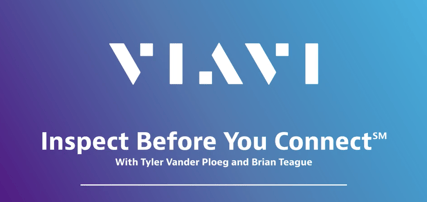 From long haul and access networks, to FTTH, FTTA and Hyperscale Data Centers, new discoveries in fiber connectivity in physical networks are opening doors to a new frontier of growth, but these discoveries have brought along some misunderstanding, confusion and disagreement.
From long haul and access networks, to FTTH, FTTA and Hyperscale Data Centers, new discoveries in fiber connectivity in physical networks are opening doors to a new frontier of growth, but these discoveries have brought along some misunderstanding, confusion and disagreement.
The cleanliness expectation for fiber connector end-faces is an example of this. From the early days of fiber connectivity, there was a general understanding that having "clean" connector end faces were helpful to ensure a proper glass-to-glass physical connection that minimizes optical loss and back reflection. But what is "clean enough"? Disagreements about this issue created numerous problems between manufacturing suppliers and customers, as each had different expectations for what a "clean" connector looked like.
This conflict led the International Electrotechnical Commission (IEC) to develop the IEC-61300-3-35 standard, a common set of global requirements for fiber optic connector end face quality. While this standard was initially released with manufacturers in mind, it has since been adopted for field use as well and is now commonly referenced as a requirement for many FTTH and Enterprise installations.
The requirements for IEC 61300-3-35 are very detailed, with specific acceptance criteria for singlemode and multimode connectors in both single fiber (i.e. LC, SC, FC, etc.) and multi-fiber (i.e. MPO) connectors. The criteria are based on several factors, including size, count and location of defects and scratches.
The IEC 61300-3-35 standard has become so widely adopted in part because of the availability of automated fiber inspection microscopes. Without these, adhering to the standard is extremely difficult. While the acceptance criteria are very specific, evaluating requirements, such as the size and location of defects, is very subjective. By using a microscope with automated analysis, users can objectively inspect the fiber end face according to the 61300-3-35 standard, get a pass or fail result, store the results and even generate certification reports in a matter of seconds.
Microscopes with automated analysis allow you to test to the same requirements as your vendor. The best part is: it's easy and repeatable. Manufacturers, installation contractors and network owners/operators can all test to the same acceptance criteria at the push of a button.
Fiber networks certainly provide us with new possibilities and opportunities, and VIAVI offers tools to eliminate misunderstanding, confusion and disagreement when it comes to addressing what a "clean" fiber connector should be.
For more information on the IEC 61300-3-35 standard, automated fiber inspection microscopes and other information about fiber inspection, check out the following videos from VIAVI's Inspect Before You Connect video series:
- Episode 10: Understanding the IEC 61300-3-35 Standard
- Episode 11: The Importance of Automated Pass/Fail Analysis for Fiber Inspection
- Episode 12: The Importance of Documenting Fiber Inspection Results


.png?width=58&height=58&name=X_logo_2023_(white).png)
